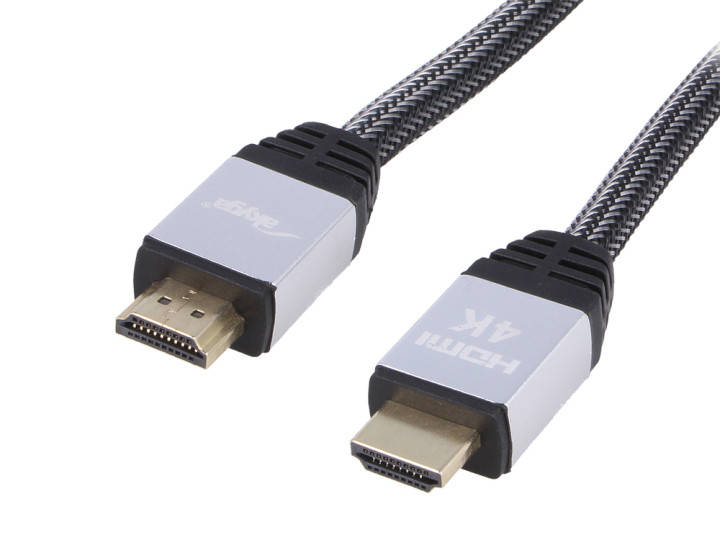The past and future of HDMI cables
What data can be transmitted using HDMI?
Modern smart TV sets are slowly replacing players, recorders and tuner amplifiers and gradually becoming our entertainment centres. In order to receive content from YouTube or Netflix or other popular streaming platforms, you no longer need to buy additional devices, because a modular computer with a controller, tuner, amplifier and power supply hidden inside your TV is more than enough. This great development brought a challenge which we know from the IT world, namely: how to get rid of those cables? In order to connect multiple antennas, audio-video sources, audio output, control signal, Internet, separate cables were needed. And this is where the HDMI interface turned out to be a perfect solution again.The HDMI functions are strictly dependent on the capabilities defined in the CEA-861 standard. As it is based on the format of transmitted metadata, among other things, it was possible to develop the technology that would not interfere with its physical specification.

Is the HDMI signal quality dependent on the cable used?
It would be easiest to say “no, it isn’t”, but in fact in some situation it would not be true. Unlike, for instance, consecutive generations ofUSB connectors, subsequent versions of HDMI plugs, sockets and cables have the same number of contacts and wires. The capacity of modern HDMI cables has been upgraded, though, at least to some extent. Ethernet communication via a pair of conductors that were previously used for other purposes is a good example here. Two of these conductors were twisted and (optionally) placed in a separate braid in order for the data transmission speed to be at a satisfactory level. In older generations of cables, where the conductors were run in parallel, efficient network connection would not be possible.Let us note here that although the 1980x1080 resolution digital video signal can be successfully transmitted without losses to the latest generation of TVs using an old HDMI cable,higher resolutions and the latest features offered by this interface require better cabling.Akyga HDMI 1.4 cables
In the TME catalogue, you will find many items that are compatible with the latest generation of HDMI. Akyga cables and accessories are a particularly interesting solution, as they offer good value for money, but at the same time have been tested and proven in many markets around the world as a reliable choice for many years of operation. Akyga cables in the TME catalogue have been carefully classified, so it is easy to select the right product for your needs.We offer up to 20 meters long cables for communication of devices over Ethernet, made in High Speed standard, compatible with the highest resolutions of monitors and TVs (4K, UHD etc.). Longer HDMI cables need the use of repeater amplifiers. We have also included HDMI 2.0 Akyga cables which support the Dual View technology for data transfer to two independent displays.
The plugs and sockets of theAkyga products have gold-plated contacts, which means that they ensure a perfect connection and at the same time are protected against corrosion. The quality of connection is very significant in the case of a digital signal, as imprecise connection of even one contact can lead to a complete loss of signal. We also offer Pro products from this manufacturer (with P as the last letter in their reference number). They have an additional braid layer to protect the signals from interference.

All Akyga products meet the requirements of at least HDMI 1.4.
Read full article
Hide full article


Discussion (0 comments)